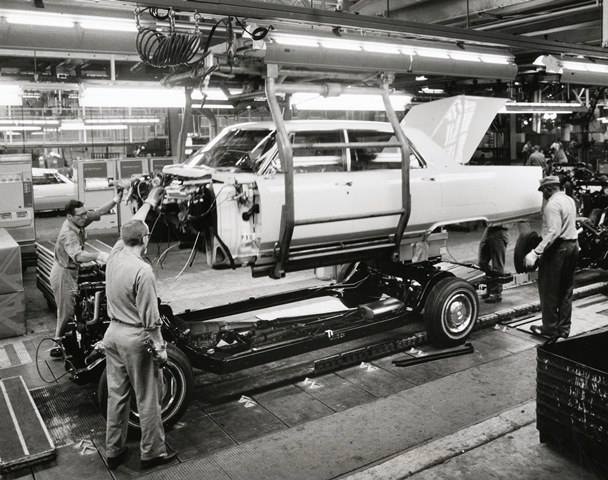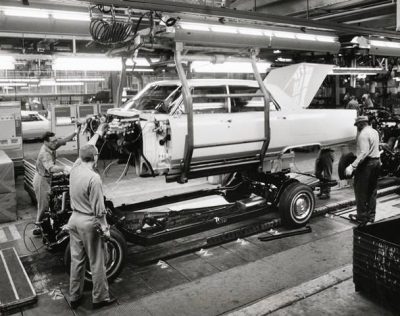- October 13, 2021
- Posted by: David Marshall
- Category: Innovation, Manufacturing, Productivity

In these days of digital manufacturing and additive manufacturing, there’s still a call for old-school manufacturing with hydraulic presses, forging and extruding metal products, stamping and punching, and so on.
There’s still a call for old-school manufacturing because there are some things that you just can’t automate. One reason is that you don’t have scale, and if you don’t have scale, you don’t have a big enough market that can substantiate the cost of automating.
Take valves and fittings for the oil field industry, for example. The shapes, sizes, and pressures are so varied and it’s not like the automotive industry where you produce 1.6 million units per year. Basically, you produced the units for the applications that you know exist. And those are a function of what your customers tell you that they have.
You can’t produce a lot of valves and wait for the orders to come in unless you have a lot of money to waste. Otherwise, you end up with an awful lot of product that is not moving.
 Not to mention, the industry is always up or down in terms of need. A few years ago, the idea of energy self-sufficiency was a big deal, so oil and gas were booming and companies were installing new facilities and pipelines.
Not to mention, the industry is always up or down in terms of need. A few years ago, the idea of energy self-sufficiency was a big deal, so oil and gas were booming and companies were installing new facilities and pipelines.
Then, politically that was not a smart thing to do so it came to a screeching halt. So if you had been expecting that run on products to be a five- or ten-year event you’d be in for a rude awakening and find yourself sitting there with a whole bunch of crap on your hands.
This is why you don’t produce products ahead of schedule unless you know it’s something that will always move, regardless of the state of the industry you serve.
Old-school manufacturing comes into play in terms of staying close to your customers and understanding their particular needs and producing products to satisfy those. That means producing to satisfy a demand, not in anticipation of a demand.
So, producing to an order or to the future should only happen if you have a relationship with your customer. You need to have the kind of relationship that they’ll let you know if changes are on the horizon. Because if they change their technology, you’ve got to change yours. And you need to know in advance that they’re going to be changing their technology, not find out later that they have changed it.
Will the Old-School Manufacturing Stick Around?
Of course, we’re seeing major upheavals in the manufacturing world, thanks not only to foreign manufacturing but to digital manufacturing and 3D printing. But there will always be the need for old-school manufacturing.
For example, you can’t build things at scale with 3D printing. It’s more suited to small, custom manufacturing jobs.
Don’t believe me? How much will it cost you to produce 1 million sheet metal screws with a 3D printer? How long will it take you? Even if you had the time to produce the screws, think of the costs. You’d be spending more than a few dollars for a single screw, when other overseas manufacturers can produce them for a penny, if not a fraction of a penny.
What about the heavy steel chassis for a car? How quickly and cheaply can a 3D printer make that? (“Not quickly or cheaply” is the only answer there.)
So there will be a need for old-school manufacturing, but that doesn’t mean you can rest on your laurels or assume that you will always be in demand. There are plenty of companies that are turning to digital manufacturing and 3D printing and providing certain products to their customers quickly, more easily, and even more cheaply than their old-school counterparts.
It’s just a question of recognizing the opportunity and being able to take advantage of it. It’s also a matter of knowing your customers so well, you know when they’ll need new products or services before they do, so you can plan accordingly.
I’ve been a manufacturing executive, as well as a sales and marketing professional, for a few decades. Now I help companies turn around their own business, including pivoting within their industry. If you would like more information, please visit my website and connect with me on Twitter, Facebook, or LinkedIn.
Photo credit: That Hartford Guy (Wikimedia Commons, Creative Commons 2.0)

